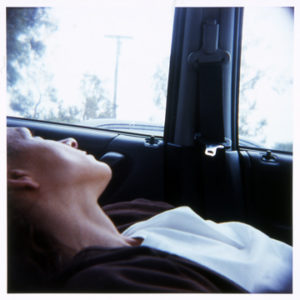
long
A beloved friend and fellow graduate student at the University of New Mexico introduced me to the Holga in 1992. At that time, this humble camera had no “bulb” setting to accommodate long exposures, and I began to use it without flash despite this limitation. Available window light was sufficient to expose the Kodak Tri-X I faithfully used, and I made self-portraits and still lifes that the Holga transformed into provocatively psychological vignettes. After graduate school, I purchased and modified a second Holga to serve as a dedicated “bulb” camera in order to photograph more nuanced, low-level lighting situations. This allowed many moments to accumulate onto one exposure, an emotive technique I had previously explored with the pinhole camera.
Photography is dependent upon technology, whether that means developing latent grains of exposed silver or selecting image quality on a digital camera. However, I sometimes prefer to minimize my dependence on technology in order to concentrate on what lies beyond the camera’s lens. Unlike many other two-dimensional media, photography is a subtractive process; the camera’s frame is imposed on the world, creating relationships among all the “stuff” that is out there. Most thoughtful compositional decisions are made based on what elements to exclude from that frame. Using the Holga encourages this relationship between photographer and subject.
Intermediate students in my classes buy a Holga 120N without flash to liberate themselves from the technical confines of the manual, 35mm camera. No longer beginners, they understand the components that contribute to proper exposure, and using the Holga cultivates their concentration on composition and quality of light, important elements that sometimes take a back seat to traditional camera adjustments. The Holga’s limited technical options encourage students to concentrate on the camera’s placement in relation to the subject being photographed.
The Holga reinforces my commitment to the importance of the darkroom tradition to photographic education. Students seem to maintain a higher level of visual integrity and be more reflective and critical when using the precious and finite commodity of film. Also, working with a larger film format introduces students to loading 120mm film-developing reels and to printing from medium format negatives; this experience enhances the students’ knowledge of darkroom equipment previously used in a different capacity (for 35mm film).
I use my third, more contemporary Holga every day. The relatively new square mask and “bulb” option help to yield more consistent results. Most important for me, though, are the elements of discovery and surprise that this unassuming camera maintains in the process of image making.